Bus Rapid Transit Meetings This Week
Help shape the future of Milwaukee -- and city transit -- with your feedback.
Milwaukee County is taking the “rapid” part of its bus rapid transit proposal quite literally. Two important public meetings are being held this week on potential alignment alternatives for the recently proposed system that would connect downtown Milwaukee with the Milwaukee Regional Medical Center in Wauwatosa. The first meeting is being held tonight, April 12th, at Miller Brewing Company Pavilion at O’Donnell Park starting at 5 p.m.
These two meetings give the public a chance to show on-the-record support, or opposition, to specific aspects of the project. The public will be able to comment on everything from station design and route selection to whether the dedicated lanes should be in the center of the street or on the outside. The project is designed to provide faster, higher-quality service between two of Milwaukee’s biggest job centers using special vehicles, stations and dedicated lanes (more on that below).
As required by the federal government, alternative routes are currently being studied for the proposed seven-mile long system. Public input from Wauwatosa residents has already caused the project team to drop a possible route along W. Wisconsin Ave. between N. Hawley Rd. and W. 89th St. Left in the study for that segment are two other options: one would run along W. Bluemound Rd. and the other along W. State St.
For those wishing to comment, but unable to make the meeting, comments can be submitted via email to contact@eastwestbrt.com.
Project Background
Milwaukee County Executive Chris Abele, who first proposed the idea, hopes to fund the project with a Federal Transit Administration Small Starts grant. At one point project costs were estimated at between $46 million to $48 million, but the final cost is highly dependent on the route and configuration. Service would start in 2019 at the earliest, putting it into service at the same time the parallel portion of Interstate 94 is rebuilt.
The proposed bus rapid transit line would include sheltered stops spaced every one-quarter to one-half mile apart, with buses arriving an average of every ten minutes during peak travel times. For much of the route buses would operate in dedicated lanes. The “rapid” portion of the name comes not from speeding buses, but from fewer stops, dedicated lanes, signal priority at stop lights, off-bus fare purchases and sidewalk-level boarding.
The service is designed to offer many of the quality and convenience aspects of a light rail system at a much lower cost. A number of other communities have already implemented bus rapid transit lines, including Milwaukee peers Cleveland and Kansas City, both now operating successful systems.
Meeting Details
- Tuesday, April 12th, 5 p.m. – 7 p.m. at the O’Donnell Park Miller Room (910 E. Michigan St., Milwaukee)
- MCTS Routes 12, 14, 30/30X, 31 and 33 all get to within a few blocks of the meeting
- Thursday, April 14th, 5 p.m. – 7 p.m. at the Zoofari Conference Center (9715 W. Bluemound Road, Wauwatosa)
- MCTS GoldLine stops at the Zoo
Next Steps
The project team, led by AECOM, hopes to select a preferred route in June of this year. Following that a grant application would be submitted to the Federal Transit Administration in August. Service is intended to begin in 2019.
What About the Streetcar?
Some may be scratching their heads, wondering how this new system would interact with the streetcar and why Milwaukee would build both? The two are intended to work together according to proponents of both projects. The Milwaukee Streetcar starter system, for which utility relocation work is underway, is designed to circulate people around downtown Milwaukee and the surrounding neighborhoods. The bus rapid transit system would instead bring people to and from downtown, with less frequent stops and a different vehicle type. Riders may find themselves taking the new bus line to Downtown and transferring to the streetcar to get to their final destinations or vice-versa. Similarly, the emerging Bublr Bikes system is designed to work well with these other forms of transportation, allowing riders to easily hop a bike to go that “last mile” of their trip.
Past Coverage and Press Releases
- PR: Bus Rapid Transit Public Meetings This Week – April 11th, 2016 – MCTS
- New Website Highlights Bus Rapid Transit Study and Project – March 29th, 2016 – MCTS
- County Plans for Bus Rapid Transit – January 16th, 2016 – Matthew Wisla
- Transit Expansion Urged – June 25th, 2015 – Michael Horne
- PR: Milwaukee County to Lead Development of Bus Rapid Transit Service – June 2nd, 2015 Chris Abele
More about the East-West BRT Line
- Transportation: Off-Board Fare Collection Begins on Connect 1 - Graham Kilmer - Apr 16th, 2024
- Streetcar Begins Daily Service To The Couture, BRT Will Soon Follow - Jeramey Jannene - Apr 11th, 2024
- Transportation: Connect 1 Ridership Continues to Grow - Graham Kilmer - Nov 23rd, 2023
- Transportation: Battery Electric Buses Will Return This Fall - Graham Kilmer - Sep 8th, 2023
- Transportation: MCTS Pulling New Battery Electric Buses From the Road - Graham Kilmer - Aug 24th, 2023
- MKE County: Local Leaders Celebrate Launch of BRT Service - Graham Kilmer - Jun 5th, 2023
- Transportation: Milwaukee’s First Bus Rapid Transit Line Is Open for Business - Graham Kilmer - Jun 4th, 2023
- Transportation: New Bus Rapid Transit Line Launches Sunday, GoldLine Ends - Graham Kilmer - Jun 3rd, 2023
- Transportation: Federal Funds Creating Two New East-West BRT Stations - Graham Kilmer - May 19th, 2023
- Transportation: First 4 Months of BRT Rides Will be Free - Graham Kilmer - May 9th, 2023
Read more about East-West BRT Line here
Eyes on Milwaukee
-
Church, Cupid Partner On Affordable Housing
 Dec 4th, 2023 by Jeramey Jannene
Dec 4th, 2023 by Jeramey Jannene
-
Downtown Building Sells For Nearly Twice Its Assessed Value
 Nov 12th, 2023 by Jeramey Jannene
Nov 12th, 2023 by Jeramey Jannene
-
Immigration Office Moving To 310W Building
 Oct 25th, 2023 by Jeramey Jannene
Oct 25th, 2023 by Jeramey Jannene
Transportation
-
MCTS Adds 28 New Buses
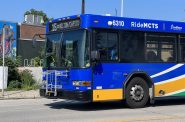 Jul 13th, 2024 by Graham Kilmer
Jul 13th, 2024 by Graham Kilmer
-
MCTS Designing New Bus Shelters
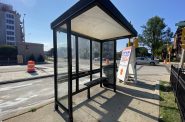 Jul 10th, 2024 by Graham Kilmer
Jul 10th, 2024 by Graham Kilmer
-
MCTS Updates RNC Bus Detours To Better Serve Downtown, Riders
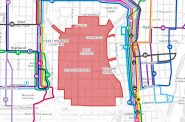 Jul 9th, 2024 by Jeramey Jannene
Jul 9th, 2024 by Jeramey Jannene






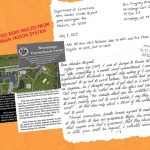
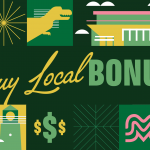
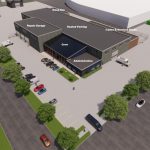














There is zero reason to spend money building a streetcar when a dedicated BRT lane could do the same thing at a fraction of the cost. Too bad our aldermen and mayor are too stupid to realize that.
@Joe, the author pointed out exactly why you would build both. BRT would fail on the same route where the streetcar is proposed because of the stop proximity. Too bad you are so narrow minded to consider varying viewpoints and information from other sources and instead resort to calling people “stupid”.
@Joe It appears you didn’t read the article, or know the difference between BRT and a streetcar. Both are needed. Would have preferred LRT to BRT though.
I don’t see anyone refuting what I said. The BRT lines from the west could just as easily connect to a BRT line running the proposed streetcar route as they could to an actual streetcar. What’s the difference, other than the fact that a streetcar costs many times more?
Maybe I’m missing it, but how do the dedicated bus lanes work? I’m not seeing any barriers to stop cars from utilizing the lane. I see cars using bicycle lanes+parking lanes/shoulders as a lane regularly so what make this situation any different?
Paul (post 5), in Cleveland (home of America’s best BRT line), they separate bus lanes from general traffic with barriers in some places and a painted line in others. The painted line has a “rumble strip” next to it alerting cars that cross into the bus lane. Also, every bus on that route has a camera to record any violators’ license plates so they can be fined.
You can see what the barriers look like on Google’s Street View. (The BRT runs on Euclid Avenue—US 20—east from downtown Cleveland.)
Two other points about Cleveland’s BRT…
First, they spent nearly as much (per mile) as Milwaukee will on the streetcar ($200 million for 6.8 miles of BRT). This includes utility relocation, tearing up and rebuilding streets, constructing stations, and designing & building a fleet of special 5-door buses (three doors on the right side and two on the left).
Second, their buses have a faster speed limit than cars on that street (35mph for the bus lanes, 25 mph for other lanes).
@Tom I understand what your saying about the barriers, but I agree with Paul. A rumble strip isn’t going to stop someone, they are consciously making the decision to use bike lanes and parking lanes with knowledge that it is not legal to drive in those lanes. The camera to fine drivers is good, but who will enforce the fines? I like the idea of BRT, but I can already see it being abused by irresponsible drivers.
This love affair with mass transit is a joke. We don’t have the population density to justify any of these ridiculous projects. So if they run bus lanes down Bluemound Road, will they will need to eliminate the street parking. They’ll want the two center lanes for buses, then bike lanes in both directions leaving barely enough room for one lane of cars in both directions. Is the goal to make travel so difficult, people stop going to downtown via Bluemound? State Street is even tighter. I think it’s time to start asking who will actually benefit from forcing this through the community besides the road builders.
Why aren’t we expanding I94 properly. That would relieve a great deal of stress on the local streets. As a resident living in this war zone of construction equipment, this is a very poor choice and a proven failed concept in other areas. We all remember when Mitchell Street closed traffic to buses only. They made it almost impossible for shoppers to travel there by car by eliminating all street parking and widening the sidewalks. When people didn’t have easy access they went elsewhere destroying a very viable retail area. While most of the area is residential, this is going to be a nightmare.
JimtheRepublican, if you knew your metro better you would know that Milwaukee has a very strong population density which is more than enough to support public transportation.
Regarding parking, I’m sure some will be lost but I’m confident it can be done in a manner that provides sufficient parking needed for retail corridors along Bluemound and cross traffic. Right now, it’s already difficult for some people to reach the job centers of downtown or the medical complex because they can’t afford cars. Faster public transit will help them reach their jobs so they can move up the income ladder.
If anything, they should extend the BRT into major job centers in Waukesha county where they struggle to fill many manufacturing jobs.
How many companies in the suburbs have lamented the fact that they have jobs for people living in Milwaukee but those people have no viable way to get to them? I’ve read more stories than I can count about that problem. AG is right.
Jimtherepublican (post 8),
Cleveland, a city with fewer people per square mile than Milwaukee, has a very successful BRT line. Its 6.8-mile “Health Line” (they sold naming rights—see next paragraph) BRT cost $200 million but saw $5.8 billion in new construction along its route. Because it is faster than the pre-BRT bus service on that same route, it uses fewer buses on the road (lower operating costs) than that same street needed before the BRT went in.
Cleveland’s BRT is so successful, that the private sector (The Cleveland Clinic and University Hospitals of Cleveland) actually pays $250,000 annually for naming rights to the entire line.